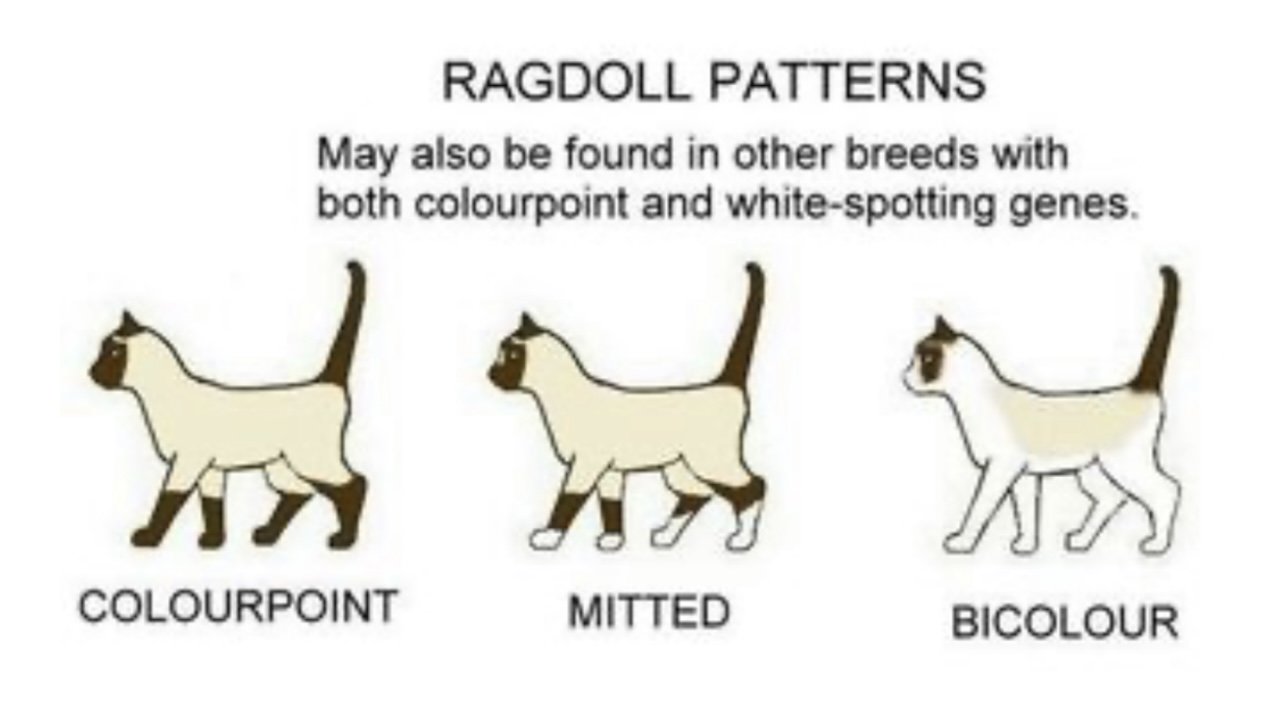Ragdolls have three coat patterns: pointed, mitted, & bi-color. Cats come in seal, blue, chocolate, lilac, red ,cream, and fawn. Points may be solid, lynx (tiger-striped points), or tortie (tortoiseshell points).
Pointed Ragdolls have the classic, Siamese-type markings: dark masks, ears, legs and tails, with a pale, creamy or misty colored body. All ragdolls should have blue eyes except minks, theirs are a aqua blueish green.
Colorpoint – One color darkening at the extremities (nose, ears, tail, and paws).
Mitted – Same as pointed, but with white paws and abdomen. With or without a blaze (a white line or spot on the face), but must have a "belly stripe" (white stripe that runs from the chin to the genitals) and a white chin.
Bicolor – White legs, white inverted V on the face, white abdomen and sometimes white patches on the back. (Excessive amounts of white, or "high white", on a bicolor are known as the Van pattern.
Ragdolls are slow maturing; they may take 2-4 years to reach full size, weight and coat. Kittens are born pure white. Their colored "point" markings develop gradually, with full point color coming in at two years. Kitten mortality is low. Ragdoll fertility is fair to very good. Mothers take excellent care of their nursing kittens.
The Ragdoll personality has a people-oriented, follow-you-everywhere quality. They greet you at the door when you come home, follow you from room to room, & sleep with you. . They never really grow up, and like eternal kittens, continue to be playful into old age. They are extremely gentle, and rarely bite or scratch even when frightened or in pain. Combined with this, they have the moderate energy level of domestic longhairs.
Ragdolls love attention and human contact. They each have their own preferences. Some enjoy being held like a baby, some are foot floppers, some are lap layers, some prefer perching on shoulders, and some are attached to the hip and thigh whenever their humans sit down.
As a rule, they do not "talk" much, but when they do, they say a word or two in soft, musical voices. They are intelligent cats that like to play fetch, and can be trained to walk with a leash. Their gentle manner makes them a good choice for families with children as well as elderly people, and their devoted love makes them wonderful companions for those who live alone. They are nicknamed "puppycats" for good reason.


